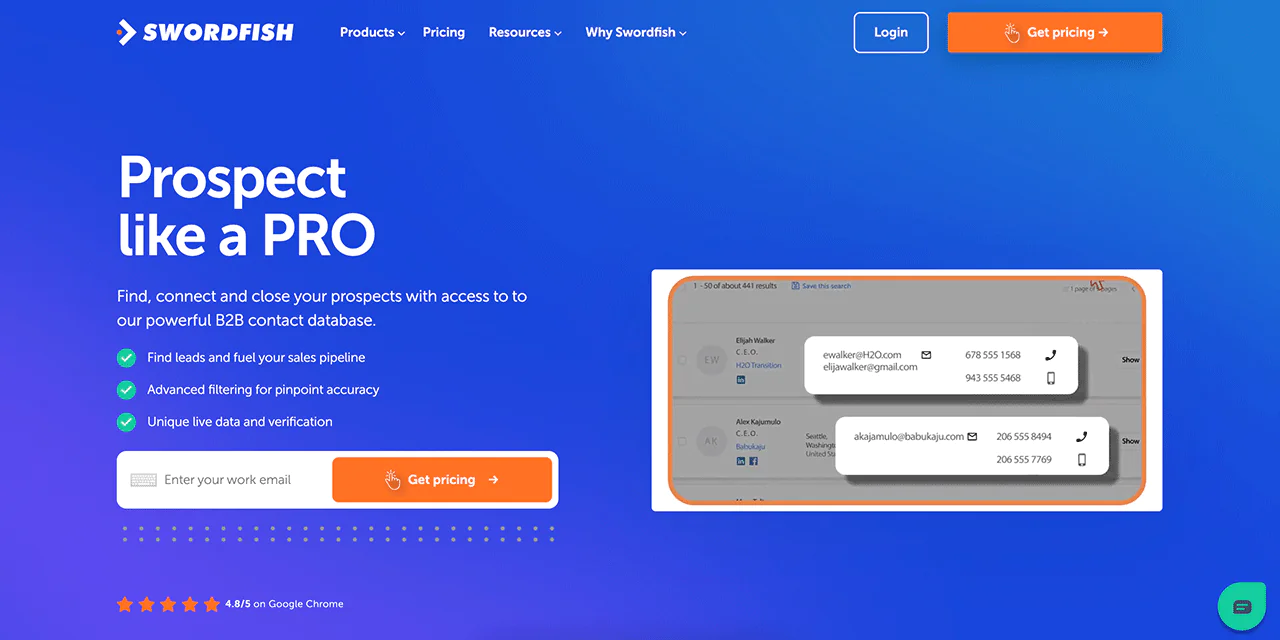
Marketing is all about customer value and it can make or break your business. PwC surveyed 15,000 people and found that 32% of customers would stop using a brand after one poor experience.
Moreover, 92% of them would totally give up on a company after having two or three bad experiences.
That’s why your products or services have to satisfy what your customers want. Sadly, many businesses struggle to realize and maximize customer value.
Now, customer value in marketing is how customers perceive a product’s worth compared to alternatives. It influences buying decisions, satisfaction, and loyalty. Key factors include price, quality, and brand. It’s vital for business growth and effective marketing.
Here we define customer value simply, explain key elements of marketing, and provide actionable strategies to improve customer lifetime value. You’ll know how to quantify value, understand it from the customer’s perspective, and use it to make money.
What is Customer Value?
Customer value is how customers see the value of a product or service compared to other choices. It’s about if customers think the purchase was worth their money. This concept is connected to customer satisfaction and if they regret buying the product.
If customers feel they didn’t get good value, they might feel disappointed. Let’s show you an example for better understanding.
Example: The Lush Bathbomb Giveaway

A great example of customer value in marketing is the Lush Bathbomb Giveaway. In early April, Lush Fresh Handmade Cosmetics marked its first World Bath Bomb Day with a huge giveaway of 100,000 bath bombs globally. It was one of their biggest events, inviting customers to join in both online and in stores.
The standout feature of this event was its personal touch. The bath bombs were tailored to match customers’ personalities and interests, turning a simple giveaway into a personalized experience.
Moreover, ‘Lucky Lushies’, or Lush fans, who visited the stores during this time got to enjoy a special treat: a bath bomb cake made by celebrity chef Justin Ellen. This added a memorable twist to their experience.
Lush used celebrity appeal and personalization to make their products more appealing. This approach didn’t just boost their brand; it also strengthened customer connections and happiness, highlighting the need to know and provide customer needs.
How Many Types of Customer Value Are There?
Customer value comes in four types: functional, monetary, social, and psychological.
Functional Value
It measures how well a product performs its tasks. For example, a laptop is valued for its ability to process words and browse the web efficiently. Similarly, a smartphone’s worth is in its functions like calling, internet access, photography, and app usage.
Monetary Value
It’s about getting the most out of what you spend. Customers want products that offer great value for their money. A good example is a discount clothing store where you can buy stylish, quality clothes at much lower prices than luxury brands.
Social Value
This value is about the social status or group connected to a product. Wearing a trendy fitness tracker, for instance, can show that you are health-conscious and up-to-date with technology.
Psychological Value
It deals with the emotional benefits of a product. It’s about the look and feel of a product, how it allows you to express yourself, and the emotions it brings out. A luxury watch, for example, can make someone feel confident and successful.
Why is Customer Value Important?
Customer value in marketing is essential for any business’s success and growth. It goes beyond just selling products or services; it’s about truly understanding and fulfilling your customers’ deeper needs and expectations.
Here’s a clearer look at why customer value is so important —
Attracting and Keeping Customers
It’s crucial to know what your customers value in your brand.
For example, if they like your low prices, raising prices without adding value might push them to your competitors. A study found that 59% of Americans stick with their favorite brands after they like them.
If they think your products are high quality, selling lower quality items might make you lose customers. By understanding what your customers want, you can better tailor your products and services to their needs.
Customizing Products and Services
When you understand why customers choose your brand, you can customize your offerings more effectively. This leads to stronger trust and loyalty from your customers, encouraging them to buy more.
Meeting and even exceeding their expectations in quality, service, and experience boosts customer satisfaction and loyalty.
Growing Your Business Sustainably
High customer value leads to more financial resources. This money can help you attract new customers, allowing for steady growth. Also, knowing what your customers prefer helps you choose the right products to offer, matching their needs and preferences.
Improving Your Market Position
A strong customer value proposition can improve your brand’s position in the market. However, a study from CSO Insights found that just 14% of sales pitches are effective enough to motivate customers to act. So, you need to be careful while offering value proposition.
That way, you can positively shape how customers see your brand, improving its reputation and attractiveness.
Better Financial Health and Attracting Investments
The more value you provide to customers, the better your customer lifetime value-to-acquisition cost ratio. This ratio is important for checking the health of your business and can make your company more appealing to investors.
Best Practices for Effective Customer Value Marketing
Effective customer value in marketing hinges on several best practices that boost the impact of your strategies. Let’s explore these essential steps —

Engage in In-Depth Customer Research
You must know your audience. This means diving into detailed research to uncover what they like, need, and struggle with.
Tools like interviews, surveys, and data analysis are invaluable for this. Gaining this level of insight is the bedrock of your marketing efforts.
Customize Experiences for Your Customers
Use CRM tools such as ActiveCampaign to shape your marketing to fit your audience.
Break down your audience by demographics, behaviors, or past purchases. Then, create campaigns that directly address the specific needs and interests of these groups.
This kind of personal touch is crucial in making customers feel special and understood.
Build Strong Relationships
Work on creating strong, long-lasting connections with your customers. It’s more than just making sales. Share useful content, offer suggestions tailored to their needs, and always be ready to talk.
Building trust and loyalty this way is really important for keeping customers engaged for the long haul.
Track and Evaluate Important Metrics
It’s crucial to monitor the right metrics to gauge how much value your customers are getting. Pay attention to things like the lifetime value of a customer, how satisfied they are, or their Net Promoter Score (NPS).
Watching these numbers gives you a clear idea of how well your efforts to create customer value are working.
Regularly Refine Customer Experiences
Stay committed to improving your strategies. Listen to customer feedback and analyze data to better understand their needs. Continually adjust and upgrade what you offer to ensure you’re always delivering value.
How to Measure Customer Value
To really know if your business is hitting the mark with your customers, understanding customer value is key. Here’s a straightforward approach you can use:
Engage Customers with Specific Questions
Talk directly to your customers. You could use surveys or phone calls to ask them about the value they find in your business.
Focus on questions about how your service or product has helped them and what improvements they’d like to see. This feedback is crucial for you to gauge the value you’re providing.
Analyze Benefits Versus Costs
Combine open-ended questions with specific ones to assess the value of your offerings. For example, ask customers to rate their satisfaction on a scale from 1 to 5.
Use these ratings to calculate an average, which will help you understand the overall perceived value. Think about the advantages and costs of your service or product, both in terms of money and other aspects.
Weigh Benefits Against Costs
Your next step is to see if the positives (like convenience, quality, and brand image) outweigh the negatives (such as price and time spent). This comparison is central to defining customer value.
Formula for Customer Value
To put a number on customer value, use this formula —
Total Customer Benefits — Total Customer Costs = Customer Value
Subtract the total costs from the benefits. Remember, benefits might include the value of the product/service, the experience, and emotional factors like social and personal value.
Since these aspects can be subjective, you need to assign a measurable value to each. For instance, exceptional customer service is often seen as a benefit that can compensate for higher prices, according to several studies.
Keep in mind that different customer groups might see benefits and costs differently. Using tools like customer personas and journey maps will help you understand these variations and cater to specific needs.
Key Driving Factors of Customer Value You Should NKnow

Understanding what drives customer value is crucial for businesses, as it significantly impacts how appealing your product or service is to your customers. Here’s a breakdown of the key factors:
Price
A major factor in customer decision-making. The cost of your product or service is central to its perceived value. Competitive pricing can be a decisive factor in purchasing decisions.
Quality
This is about how well your product or service meets or even exceeds customer expectations. High-quality offerings are often perceived as more valuable.
Product’s Functionality
Customers look for products or services that solve their problems. The more functional and effective your offering, the more valuable it is likely to be perceived.
Positioning
This is how your product or service is perceived in the minds of your customers. It’s about the emotions, sentiments, and unique characteristics associated with what you offer. Distinctive positioning can significantly elevate perceived value.
Service
This covers the assistance you provide to customers throughout the purchase process, including pre-and post-sale. Exceptional service can greatly enhance the perceived value of your offering.
Marketing and Branding
The way you present and promote your brand greatly affects perceived value. Marketing strategies that resonate with customers and address their problems effectively are typically more successful.
Current and Previous Customer Relationships
The value perception is also shaped by the nature of your past and ongoing relationships with customers. Positive experiences can lead to a higher value perception.
Personal Attributes or Preferences
These include a customer’s individual, cultural, or religious beliefs, which can influence their purchasing decisions. Products that align with these personal beliefs are often more highly valued.
How to Build Customer Loyalty with Any Budget
Gaining customer loyalty is vital for any brand. It’s all about providing products, services, or experiences that customers value. When customers like what you offer, they’ll buy more and spread good words about your brand.
Here’s an easy way to boost this relationship and build loyalty, regardless of your budget —
- Encourage More Purchases: Motivate your customers to keep coming back to your brand for their needs. Aim to be their first choice.
- Increase Customer Involvement: It’s more than just selling. Get your customers to engage with your brand, whether by using your products often or taking part in brand events.
- Build Emotional Bonds: Create a strong, positive connection with your customers. This emotional link is key for loyalty that lasts.
Working on these areas helps develop stronger, more enduring relationships with customers. This effort might need some investment, but it’s doable on any budget, big or small.
To improve how you interact with customers, you can take various steps. Internally, this could mean investing in better technology or customer service. Externally, think about giving customers unique experiences, like surprise rewards, to make them feel valued and closer to your brand
Practical Customer Value Examples
If a brand proves that a product’s benefits are worth the price, it’s easier to retain customers. In other words, when your product provides more value than what it costs, keeping customers is simpler.
1. Double Cheese Burger — Au Cheval
Au Cheval, known for its delicious burgers, is a prime example of offering great value for money. Their burger prices vary from $10.95 to $12.95, noticeably higher than those at popular fast-food chains like KFC or McDonald’s.

So, why do customers willingly pay more for a burger at Au Cheval? The answer lies in the unique value they offer. Au Cheval’s burgers have a distinct taste that sets them apart from the usual offerings at KFC or McDonald’s.
This unique flavor and quality justify the higher price, showing how providing extra value can lead to customer retention, even with higher costs.
2. Digit (Now Oportun) – Save Money Without Thinking About It

Digit makes saving money simple in the busy world of personal finance apps. Its key feature is straightforward: it helps you save money without any effort. Once you link Digit to your bank account, it checks how you spend and what bills you pay.
Then, it quietly moves small amounts of money into a safe, FDIC-insured savings account. This whole process is automatic, so you don’t need to do anything to start saving.
The best part about Digit is its automation. There’s no need to set aside time to think about saving – Digit handles it all. Imagine a clever system that regularly tucks away a little money for you. Soon, you’ll notice your savings growing, all while you have enough for everyday expenses.
Digit is particularly useful for people who struggle to save, especially those with tight budgets. It’s an easy, hands-off method that takes the hassle out of saving. While it might not be for everyone, Digit’s unique way of making saving effortless is both clear and attractive.
3. Apple – The Innovator
Apple Inc, once criticized from the beginning stages, has now become a leader in creating new trends. People often wonder why Apple products are priced higher. It’s because Apple is known for being a trendsetter, always coming up with unique features.

Apple led the change from traditional analog audio to digital audio, a trend that giants like Motorola and Google eventually followed. A notable example is the iPhone X’s design, which many other smartphone brands have since mirrored.
Apple’s success comes from its commitment to being different and innovative. The company consistently wows users with remarkable features, making the higher cost of its products worthwhile.
4. Unbounce – Making A/B Testing Easy

Unbounce is a landing page optimization tool that shines in the business-to-business (B2B) world. What’s great about it? You can create, launch, and test your landing pages without any complicated IT processes. It’s a big plus for both small and large businesses that find the tech side of A/B testing challenging.
Visiting the Unbounce website, you’ll find it easy to navigate. There’s a clear call-to-action (CTA) and a simple guide showing how to use Unbounce in just three steps. With the platform, marketers can create landing pages that work well on mobile devices, a key concern for many professionals.
In short, Unbounce provides an easy-to-use solution for A/B testing, making it an essential tool for businesses wanting to improve their online impact.
5. LessAccounting – Simplified Bookkeeping

LessAccounting stands out for making bookkeeping straightforward and stress-free. Seeing that bookkeeping can be a headache for many, especially for those without accounting expertise, LessAccounting simplifies it.
The platform’s core idea is clear right from its homepage tagline: “Make your life easier with our accounting software.” This message of easy and painless accounting is echoed throughout the site.
LessAccounting is particularly geared towards small businesses, freelancers, and small-business owners. Its content, from helpful blog posts to small-business case studies, consistently highlights the simplicity and ease of use of the software.
As a whole, LessAccounting aims to simplify bookkeeping and make it easier for users to manage.
Swordfish AI’s Role in Improving Customer Value with Reliable Contact Data

Swordfish AI is dedicated to delivering precise contact data, improving the value for our customers. With our platform, you receive accurate cell phone data and a verification system. It makes us ideal for cold calling and other direct marketing activities.
Plus, our data profiles span over 3.5 billion, connecting businesses with important contacts. We make it easy to work with our tools, so they fit into your existing workflow. This makes finding and contacting prospects quick and straightforward.
Being marketing professionals, we offer you a straightforward and accessible experience to reach out to your customers. Thus, it’ll be easier for you to examine and work on creating value for your customers.
Key Features of Swordfish AI
Swordfish AI comes with a range of features designed to make finding and connecting with important contacts easier —
-
Easy Web Searches with Chrome Extension

With Swordfish AI’s Chrome Extension, you can easily find contact details on websites like LinkedIn, Twitter, and Facebook. This makes collecting online contact information straightforward.
-
Targeted Contact Lists with Prospector Tool

Prospector tool helps you build specific lists for calling or emailing. It uses detailed filters to help you quickly find the right people to contact.
-
Reverse Search for Detailed Information

Even with limited information, you can find detailed contact details. it’s useful when you know little about a prospect but need to get in touch.
-
API Integration

Swordfish AI can be integrated into your own software systems. It’s beneficial for businesses wanting to improve their applications with accurate contact data.
Conclusion
For effective marketing and increased profits, you need to know customer value in marketing. It’s important to see value from your customers’ point of view for success.
By measuring customer value and linking it to their lifetime value, you can pinpoint your most valuable customers. It helps you fine-tune your marketing to attract more of the right buyers. Also, using customer value strategically sets you apart from competitors.
Implement what you have learned about improving customer value. You can use this insight when setting prices and deciding where to spend.
Most importantly, tap into Swordfish AI’s rich contact pool and reach the right people. Make every marketing move count using Swordfish AI today!
FAQs
What is customer value hierarchy?
Customer value hierarchy is a method used by various businesses, from large corporations to small enterprises, to gauge how satisfied their customers are. It’s a way of assessing the value that customers place on their products or services.
What are the two components of customer value?
Customer value has two key components. Firstly, the desired value is what the customer expects to get from a service or product. Secondly, there is perceived value, defined as the benefit a customer feels they received after making a purchase.
What is managing customer value?
Customer Value Management (CVM) is about how customers perceive the value of their money compared to what competitors offer. It’s also referred to as the Customer Value Added (CVA) approach. This concept focuses on understanding if customers feel they are getting good value from a company’s offerings.


 View Products
View Products




